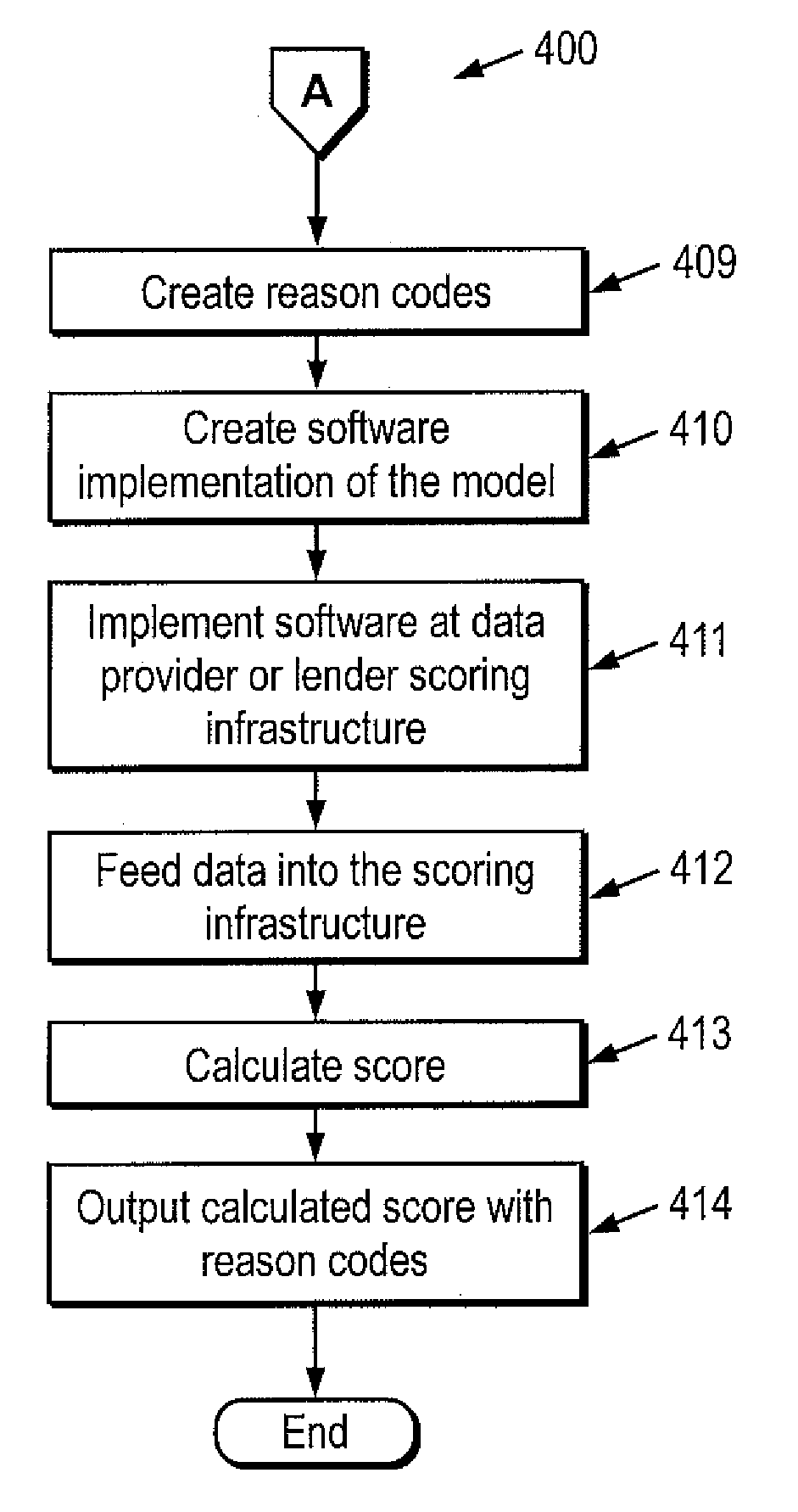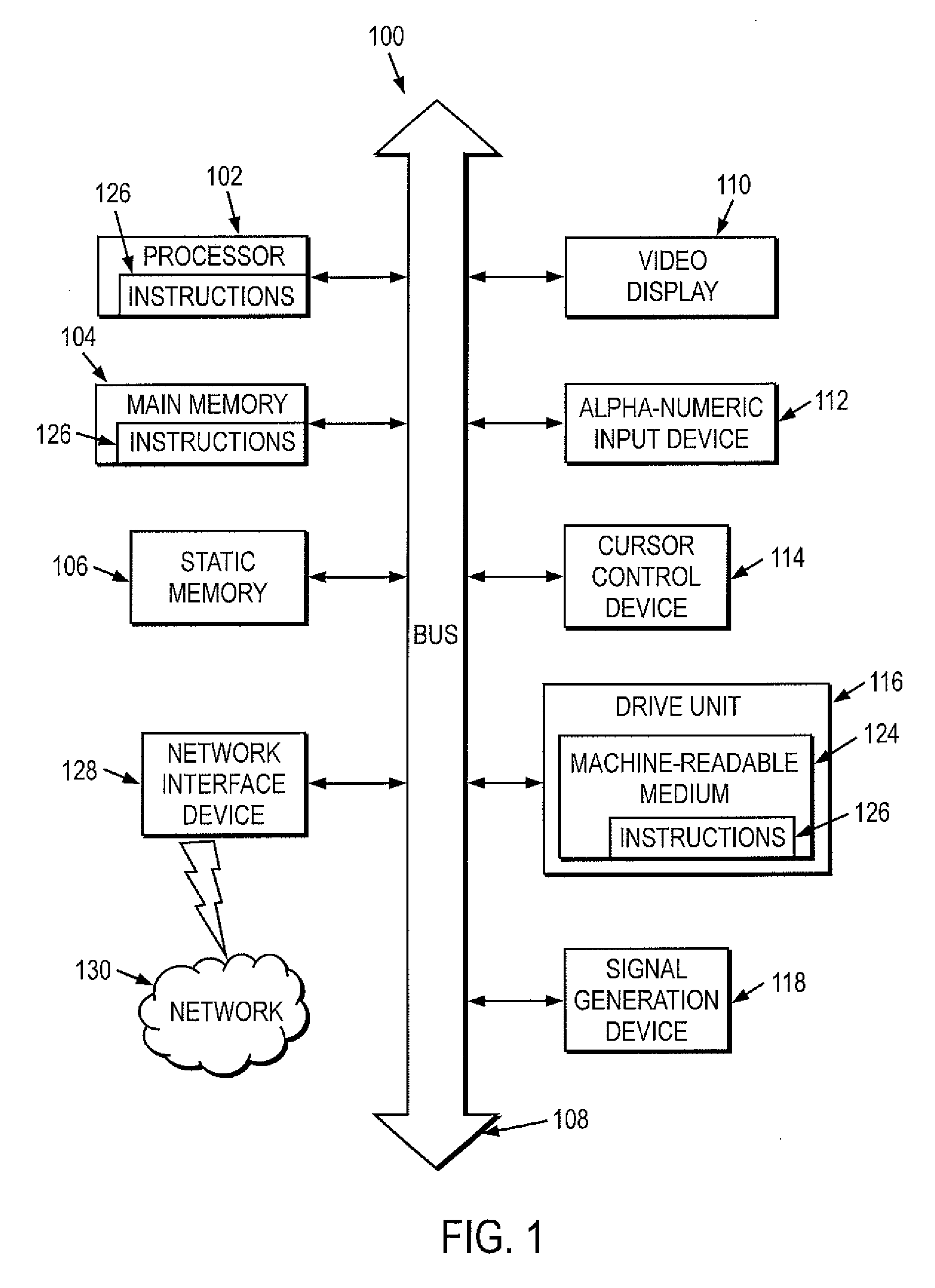Method and apparatus system for modeling consumer capacity for future incremental debt in credit scoring
- Summary
- Abstract
- Description
- Claims
- Application Information
AI Technical Summary
Benefits of technology
Problems solved by technology
Method used
Image
Examples
experiment i
[0175]One skilled in the art will recognize that, in the risk-scoring domain, a “bad” constitutes someone who has failed to repay their debts as promised. For one reason or another, these consumers that go on to show bad performance are unable to take responsibility for debts previously incurred. “Goods,” however, includes consumers with high ability to pay. It was desired to validate the predictive model with a data set that would show whether it was possible to distinguish between “goods” and “bads” as a function of incremental balance. Experiment I involves a validation using a validation data set made up of credit bureau data provided by TRANSUNION, LLC, Chicago, Ill. The validation data set described herein involves a cohort of subjects all having a FICO score in the band of 660-<700. The score works similarly in the remaining scorebands. The particular implementation validated involved a 24-month performance window and a 6-month intermediate period during which consumer action...
experiment ii
[0189]FIGS. 10A-D provide a series of bar charts depicting performance vs. balance change for four segments, risk score=620-659 (FIG. 10A), 660-699 (FIG. 10B), 700-739 (FIG. 10C) and 740-700 (FIG. 10D). The present validation data set comprises credit bureau data regarding management of revolving credit card accounts. As shown in FIG. 10A, within each segment, as capacity increases, the “bad” rate decreases. Additionally, across segments, the “bad” rate decreases from one segment to the next, each segment corresponding to a higher FICO segment. Somewhat anomalously, in FIG. 10A, the bad rate for mid-level- and high-capacity exhibit a higher “bad” rate for low balances than for high balances. As in validation data set I, such anomaly may be explained by the riskiness of the entire segment, no matter what the capacity index (CI) is. For all other groups in the remaining segments, with the expectation of the mid-level capacity index (CI) in FIG. 10B, the “bad” rate is lower for low bal...
PUM
 Login to View More
Login to View More Abstract
Description
Claims
Application Information
 Login to View More
Login to View More - R&D
- Intellectual Property
- Life Sciences
- Materials
- Tech Scout
- Unparalleled Data Quality
- Higher Quality Content
- 60% Fewer Hallucinations
Browse by: Latest US Patents, China's latest patents, Technical Efficacy Thesaurus, Application Domain, Technology Topic, Popular Technical Reports.
© 2025 PatSnap. All rights reserved.Legal|Privacy policy|Modern Slavery Act Transparency Statement|Sitemap|About US| Contact US: help@patsnap.com



